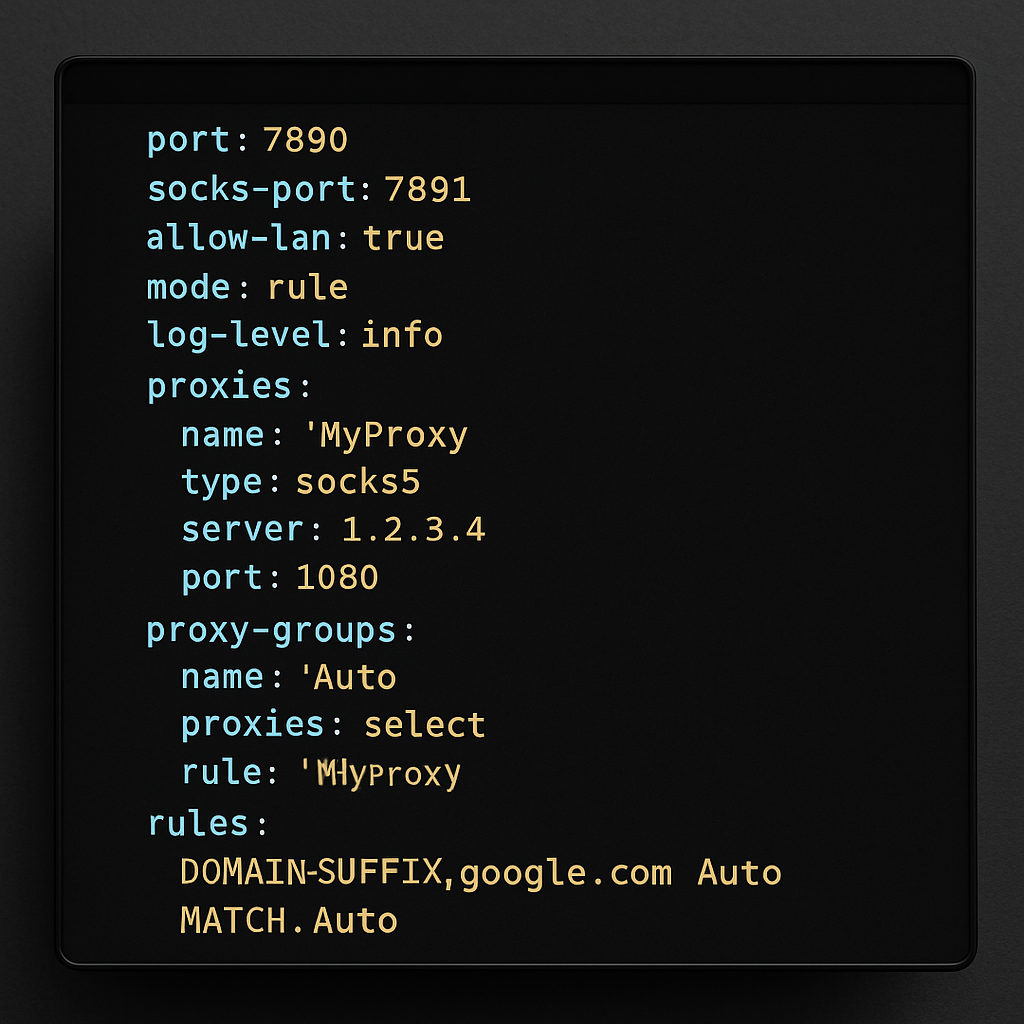Configuring Clash for Windows (CFW) can feel like stepping into a world of symbols, indentations, and cryptic keys—especially if you’re new to YAML. Yet beneath that minimalist syntax lies one of the most powerful configuration ecosystems in the proxy world. YAML files are the backbone of Clash’s flexibility, enabling everything from simple proxy selection to advanced rule-based routing used by power users worldwide.
In this guide, we’ll break down how YAML works within Clash for Windows, demystify its structure, and walk you through building, customizing, and debugging your own configurations. Written in a PC Magazine editorial style, this article provides a clear, modern analysis that blends practical instructions with expert-level insight.
What YAML Files Are and Why They Matter for Clash
Clash for Windows—an advanced GUI client for the Clash core—relies heavily on YAML files to define its behavior. These human-readable configuration files specify everything the program needs:
- What proxies are available
- How to group them
- Which rules determine traffic routing
- Which external lists to pull
- How system-level behaviors should function
YAML (“YAML Ain’t Markup Language”) is a structured configuration format designed for simplicity. Unlike JSON or XML, YAML focuses on readability and minimal syntax, making it the ideal choice for network configurations where fast editing matters.
For Clash users, learning YAML isn’t optional—it’s the gateway to unlocking the app’s full power. Without understanding YAML:
- Proxies won’t load
- Rule-based routing won’t behave correctly
- External rule providers may fail
- Debugging becomes nearly impossible
Basic YAML Structure in Clash – Understanding Key Parameters
A typical Clash YAML configuration includes the following main sections:
- General settings (
port,mode,allow-lan, etc.) - Proxy definitions (
proxies) - Proxy groups (
proxy-groups) - Rules (
rules) - Rule providers (
rule-providers)
Here’s a simplified template for context:
port: 7890
socks-port: 7891
allow-lan: true
mode: rule
log-level: info
proxies:
- name: "MyProxy"
type: socks5
server: 1.2.3.4
port: 1080
proxy-groups:
- name: "Auto"
type: select
proxies:
- "MyProxy"
rules:
- DOMAIN-SUFFIX,google.com,Auto
- MATCH,Auto
General Settings
These define system-level behavior in Clash.
- port – The HTTP proxy port.
- socks-port – SOCKS5 proxy port.
- allow-lan – Whether other devices can use your PC as a proxy.
- mode – Options:
rule,global,direct. - log-level –
debug,info,warning, orerror.
Proxies Section
This is where you manually define incoming proxy nodes. Clash supports:
- HTTP/HTTPS
- SOCKS5
- Shadowsocks (SS)
- VMess
- VLESS
- Trojan
Proxy Groups
Groups allow you to organize proxies into categories such as:
- select – User manually chooses a proxy
- url-test – Automatically picks the fastest proxy
- fallback – Uses the first available proxy
- load-balance – Distributes connections evenly
Rules and Rule Providers
Rules determine how traffic is routed, while rule providers let Clash download community-maintained rule lists automatically.
Configuring Proxies Manually – HTTP, SOCKS5, and Shadowsocks
1. HTTP/HTTPS Proxy Setup
proxies:
- name: "HTTP Node"
type: http
server: 10.0.0.1
port: 8080
username: user
password: pass
2. SOCKS5 Proxy Setup
proxies:
- name: "SOCKS Node"
type: socks5
server: 10.0.0.2
port: 1080
username: user
password: pass
3. Shadowsocks (SS) Setup
proxies:
- name: "SS Node"
type: ss
server: 10.0.0.3
port: 8388
cipher: aes-256-gcm
password: mypassword
Setting Up Rule-Based Routing – Creating Custom Route Configurations
1. Domain-Based Routing
rules:
- DOMAIN-SUFFIX,netflix.com,Streaming
2. GEOIP Routing
- GEOIP,CN,DIRECT
3. Process-Level Routing (Clash Meta)
- PROCESS-NAME,qbittorrent.exe,Download
4. Catch-All Rule
- MATCH,Proxy
Adding External Rule Providers – How to Integrate Community Rule Lists
1. Define a Rule Provider
rule-providers:
streaming:
type: http
behavior: classical
url: "https://example.com/streaming.yaml"
path: ./rules/streaming.yaml
interval: 86400
2. Attach Provider to Rules
rules:
- RULE-SET,streaming,Streaming
- MATCH,Proxy
Testing and Debugging Configurations – Ensuring Your Setup Works Correctly
1. YAML Validator
Clash for Windows includes real-time validation for syntax errors like indentation issues or invalid keys.
2. Testing Proxies
Use the built-in latency test to verify each node.
3. Verifying Rules
Check the Connections panel to see which proxy each domain uses.
4. Common YAML Mistakes
- Using tabs instead of spaces
- Incorrect indentation
- Missing dashes for lists
- Wrong casing
Customize Your YAML Setup
Clash for Windows is as powerful as the YAML you feed it. Once you understand the structure, syntax, and routing logic, Clash becomes a fully customizable proxy engine capable of handling complex routing scenarios. YAML gives you endless flexibility—perfect for optimizing streaming, managing dozens of proxy nodes, or building precision routing for any application.
Experiment confidently, validate often, and refine your configuration until it suits your workflow perfectly. With time, you’ll build YAML files as polished as any professional provider.
